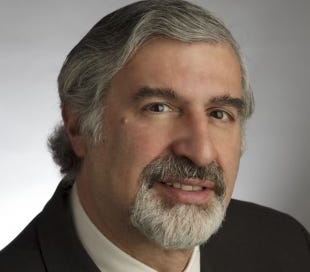"You never know who will be helpful." That’s one of the lessons Richard Kurin has learned from a lifetime as an Everyday Ambassador. Richard is Ambassador at Large for the Smithsonian Institution, and before that, he oversaw its vast network of museums, research centers, and cultural preservation initiatives worldwide.
I recently had the chance to speak with Richard at the Global Ties annual meeting, where he shared insights from his remarkable career.
Discovering the World by Chance
Richard grew up "a Jewish kid in the Bronx" with little exposure to global affairs. But one fateful summer in college, a friend suggested they take a trip to India. His professor introduced him to someone at the Museum of Natural History in New York—none other than Margaret Mead.
Mead and her colleagues put Richard to work collecting artifacts on his travels. The experience transformed him. "I thought of milk as something that comes out of a machine when you put in a quarter. I had to learn about bulls and cows and a whole different life."
That trip sparked his passion for anthropology. He went on to earn a PhD and joined the Smithsonian just in time to help plan the U.S. Bicentennial celebrations. That was nearly 50 years ago—and now, as the U.S. prepares for its 250th anniversary, Richard remains a driving force in cultural diplomacy.
The Ripple Effect of Relationships
One day, Richard welcomed a young Haitian student as an intern, sharing insights into the Smithsonian’s work. Years later, when a devastating earthquake struck Haiti in 2010, that former intern—now Haiti’s Minister of Culture—turned to Richard for help. Together, they mobilized hundreds of experts to protect Haiti’s cultural heritage. (See their work here)
As that project unfolded, Richard also welcomed someone new—a Ukrainian visitor to the museum on a Fulbright Scholarship, who shadowed his efforts in Haiti. That visitor saw the value to Haiti and commented, “Someday, we might need this in Ukraine.” Fast forward to Russia’s invasion, and that young visitor—now overseeing Ukrainian cultural affairs—was ready. Thanks to relationships built years earlier (supported by critical US government programs like the Fulbright Scholarship program), Richard and his team swiftly partnered to protect Ukraine’s heritage from wartime destruction.
This isn’t traditional leadership. It’s not about commanding or legislating change—it’s about taking time for strangers, building friendships, leading by example, and creating opportunities for knowledge-sharing.
Showing Beats Telling
This year’s Global Ties Citizen Diplomat Award went to the Smithsonian Institution. This begs an interesting question: How is an institution like the Smithsonian an Everyday Ambassador? What can we learn from the Smithsonian?
Museums don’t dictate policy or prescribe solutions. Instead, they inspire. A child examining the Smithsonian’s aviation exhibits might notice a detail that sparks the next breakthrough in rocket technology.
Take Yo-Yo Ma, for example. The legendary cellist once visited Richard’s office, eager to explore his Chinese heritage. As Richard introduced him to traditional Chinese instruments, Yo-Yo had an epiphany. “Richard, what happens when cultures come into contact with each other?” Richard quipped, “Sometimes they start killing each other.”
“Or maybe,” Yo-Yo countered, “they make beautiful music together.”
That conversation led to the creation of the Silk Road Project, an extraordinary musical collaboration that bridges cultures worldwide. (Learn more here)
Richard’s Advice for Everyday Ambassadors
What can we learn from Richard’s approach? He offers four key takeaways:
Be Savvy. Understand the environment you’re working in. Observe how things get done (or don’t). Identify key players, institutions, and motivations. Anthropologists call this ethnography, but it’s essential for anyone navigating complex systems.
Have a Plan. Serendipity is powerful, but strategy matters too. Set goals, evaluate progress, and stay intentional about your direction.
Master Communication. Learn the art of sharing complex ideas with diverse audiences. Whether through storytelling, a concise email, or a compelling one-pager, clear communication can open doors.
Build a Coalition. Change doesn’t happen in isolation. Identify allies, collaborators, and supporters early. Even the Smithsonian, with its vast resources, relies on partnerships to drive meaningful impact.
And above all, remember: You never know who will be helpful.






Annelise, this piece beautifully captures the quiet, lasting impact of relationship-building. Richard Kurin’s story isn’t just about diplomacy—it’s about presence, about recognizing that every conversation, every act of generosity, can ripple outward in ways we can’t predict.
I love how you frame serendipity not as random luck but as something we make space for through awareness, strategy, and connection. That mix of openness and intention is what turns fleeting encounters into lifelong collaborations.
And Yo-Yo Ma’s insight—cultures can clash, or they can create something extraordinary together—rings true far beyond music. It’s in how we approach difference, whether in our communities or across continents.
Grateful for this read. Have you read Christian Busch’s book about serendipity? [https://theserendipitymindset.com/](https://theserendipitymindset.com/)